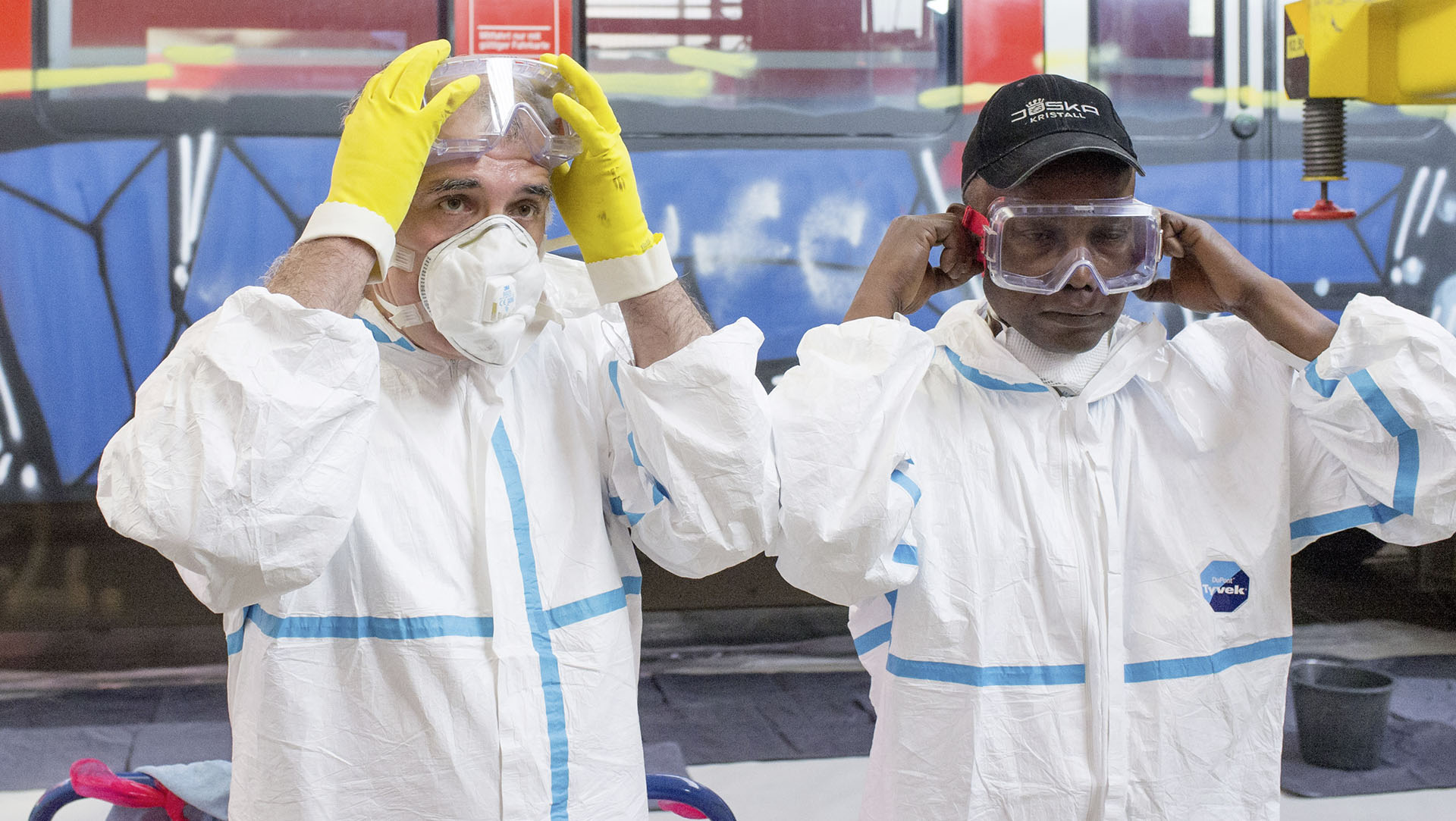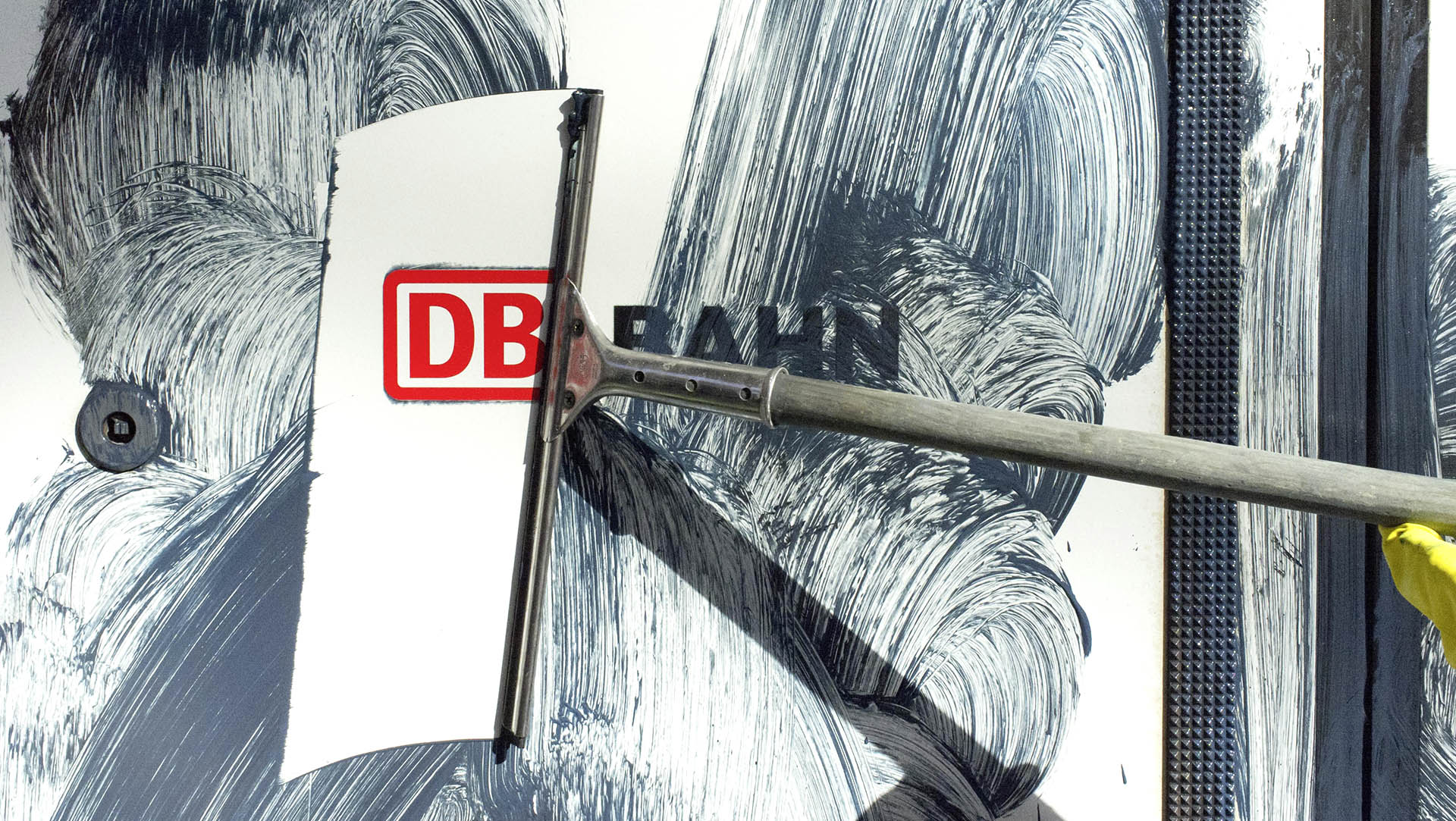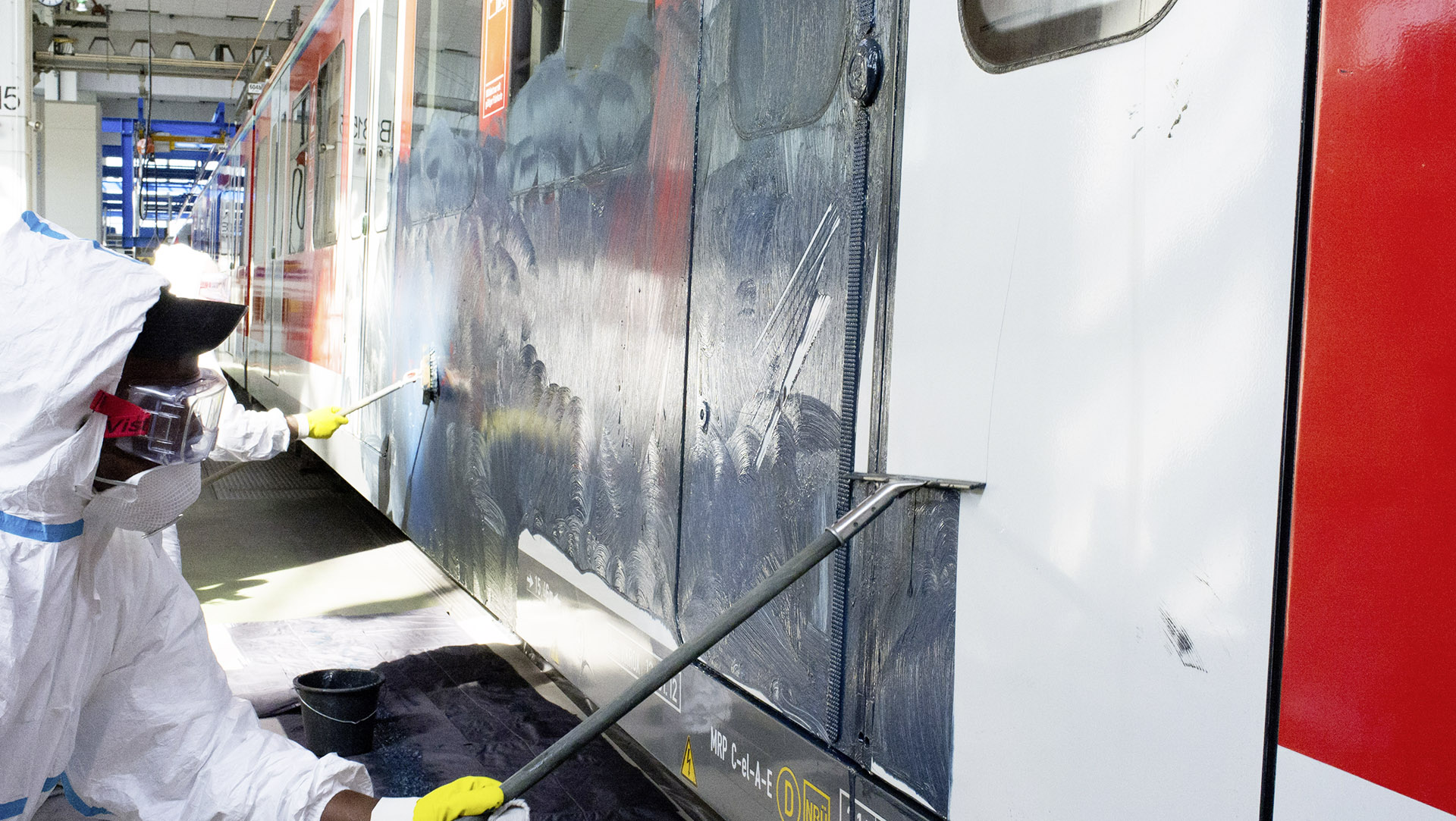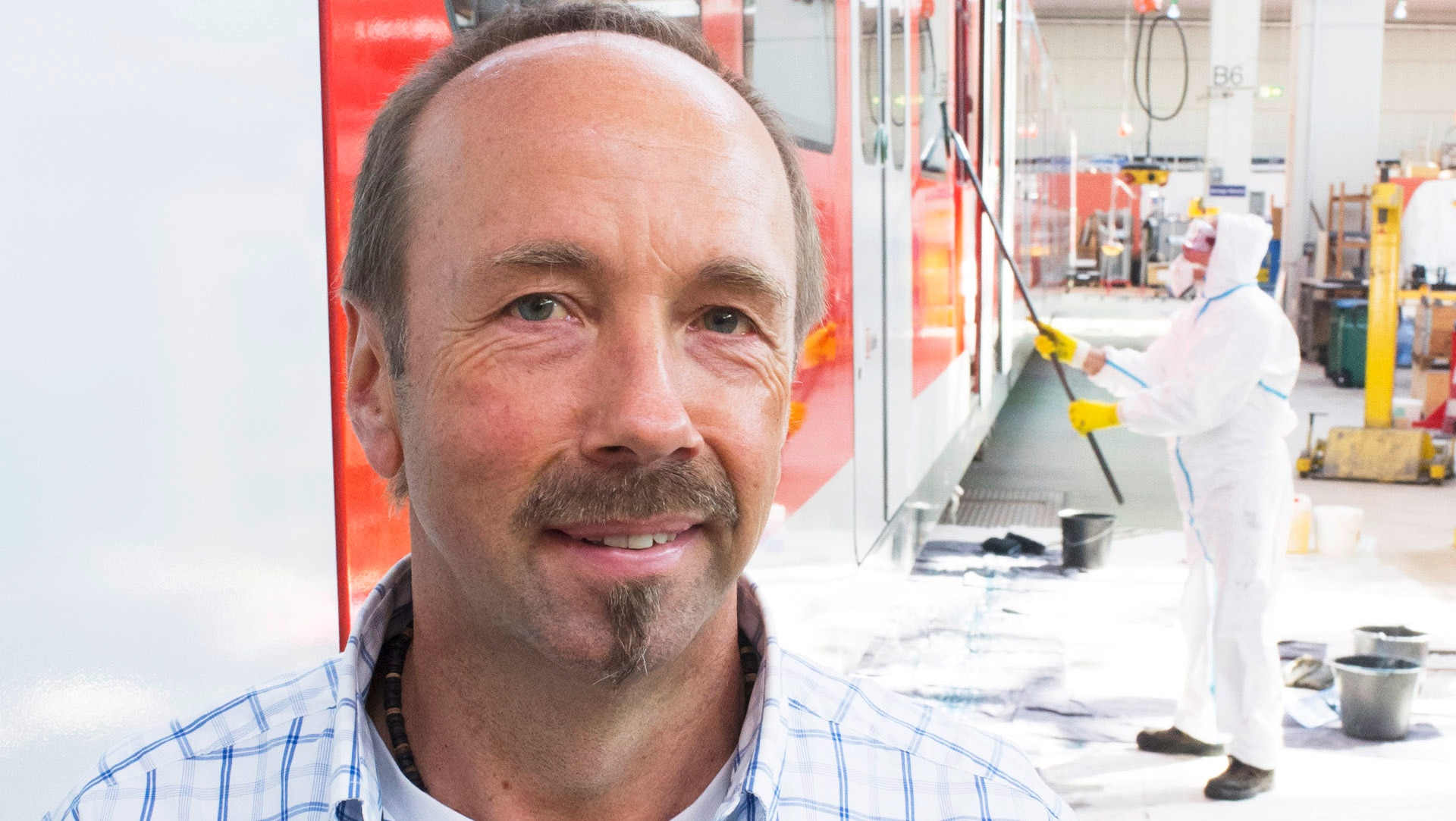As a result, the use of this technique is widespread today. In addition to locomotives and railcars for public transportation, polysilazanes also have various other applications, such as the protection of building façades, ship hulls, stainless steel sinks and showers, works of art in public spaces, and classic automobiles.
According to Bergheuer, a chemical engineer, other areas of application will be added in the future. That’s because Merck KGaA, Darmstadt, Germany is expanding its portfolio of polysilazanes, which have different properties depending on their individual modification. Such developments could also give Deutsche Bahn an additional advantage in its endless cat-and-mouse game with the sprayers.














